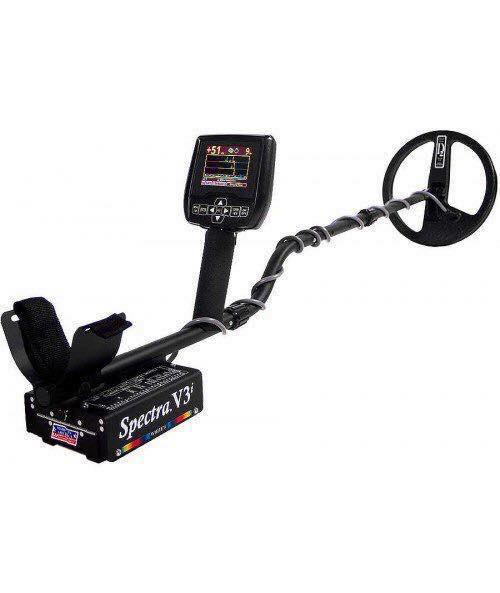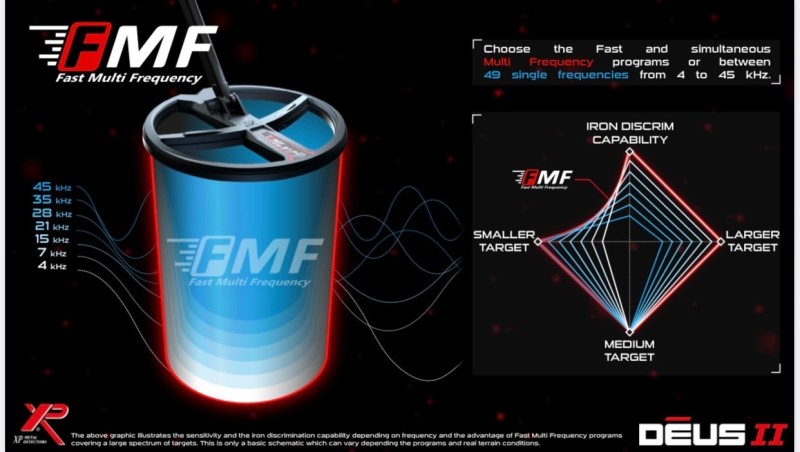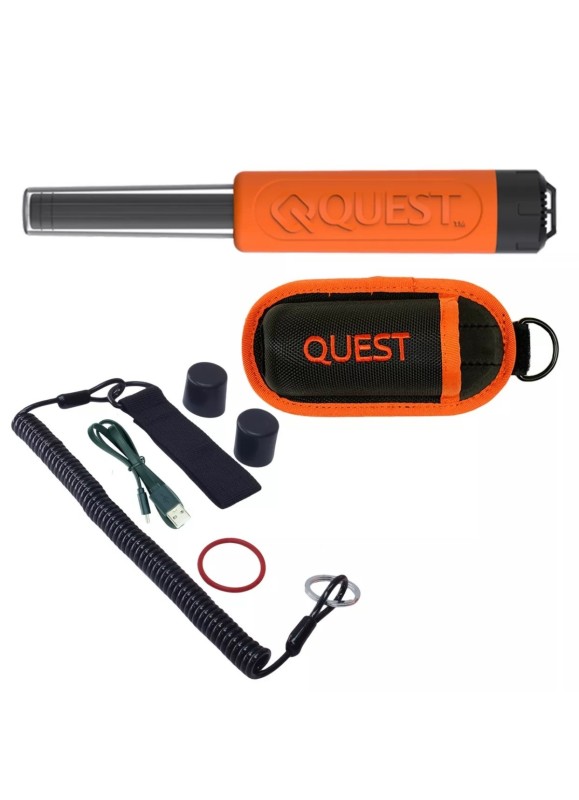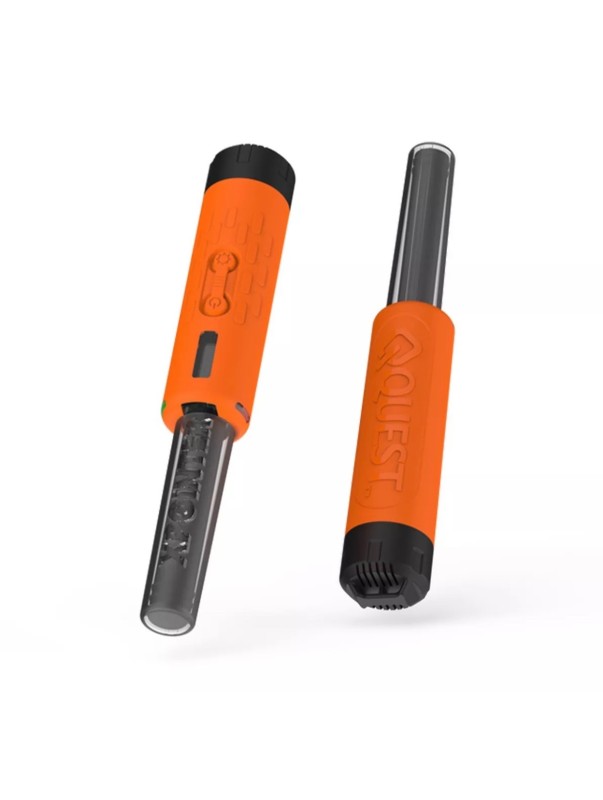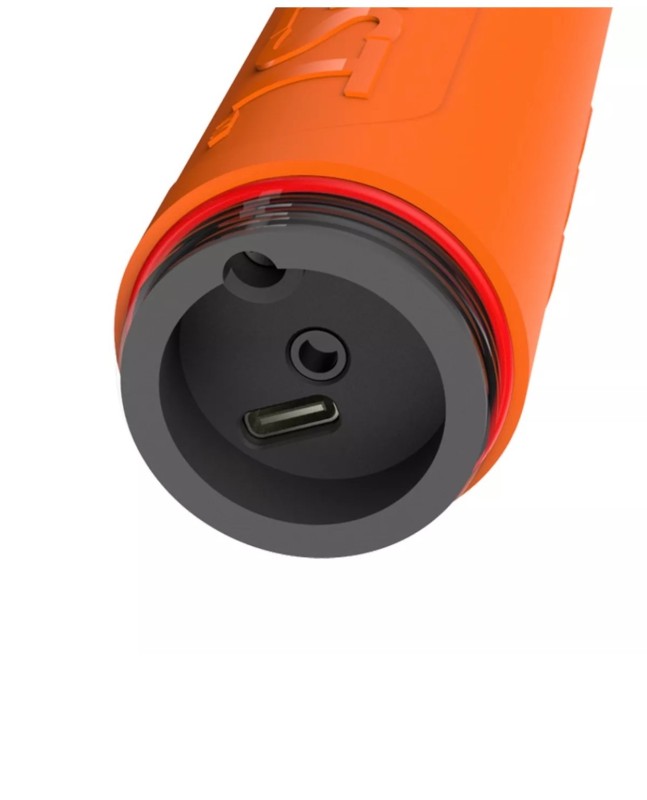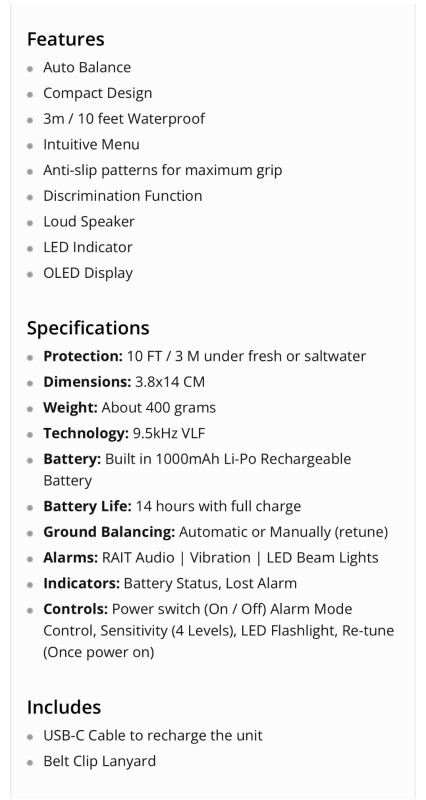-
Posts
650 -
Joined
-
Last visited
Content Type
Forums
Detector Prospector Home
Detector Database
Downloads
Everything posted by ☠ Cipher
-
Simultaneous multifrequency shines best in saltwater environments, but there are some benefits to using it in mild ground. This is all theoretical, often nuanced, and at times depends on other factors. One is a more stable and reliable target ID and often to a greater depth. Depth in itself is a little trickier. Theoretically you should see a more consistent depth across the range of conductors, whereas single frequency tends to hit harder on conductors it’s particular frequency is tuned to and there tends to be a fall off in depth as you move away from that conductivity. If I were using an XLT at 6.5khz it should hit harder on Silver and depth would fall off on gold. This is one reason single frequency detectors began moving more in the 10-14khz range. Though theoretically this range hits hardest on mid conductors, it strikes a better balance in sensitivity across the spectrum. In my ground and in my freshwater swimming holes my 12khz Simplex would do just fine though if I didn’t have multifrequency options. The differences often seem subtle.
-
If it weren’t for the performance of my equinox and my curiosity about what the next gen multi-IQ platform will be like I’d be a lot more likely to gamble on being an early adopter of a Deus 2. I’ve saved a substantial sum for a next gen device whether it comes from Minelab, Garrett, Nokta Makro, or Deus 2, but I haven’t saved so much that I could buy all 4 in a short space of time. If the next gen Multi-IQ is the best of Equinox and CTX-3030, I all but know that’s the machine I’m going to want out of all of them. That’s the main event in my mind, unless Nokta Makro pulls a rabbit out of their hat on the 19th and releases a super fast V3 or V4 type of multifrequency. But the fact that everyone seems to be gunning for Multi-IQ tells me I’m in the right place for now. I’m going to spend wisely from here so that I end up with what I’d be happiest with when the dust clears.
-
It’s possible some of it may have caught them by surprise, like the coil ears etc. Could be partly due to an inconsistent compound. If you think back, from its launch the equinox was successful beyond their wildest dreams. I bought it brand new sight unseen myself because the technology and feature set was that alluring. I almost never do that. I usually let someone make a closet queen of it first. Anyway, it seemed unstoppable. Even when it reached the hands of users it seemed to meet the vast majority of expectations performance wise. If it weren’t such an exceptional machine the problems it’s had might’ve killed any other machine in a way it hasn’t come close to killing equinox sales. In a way it’s unfortunate because they weren’t forced to fix it. Now they have to contend with competitors who are not only nipping at their heels technologically, but who will be exploiting known, existing weaknesses until their next release remedies them.
-
I’ve considered this. I just wish Minelab had taken greater care to design the equinox in many ways. If they had, they might not be in the position they may now find themselves in. The technology itself is about all you could ask for in a machine that does it all. The housing just doesn’t seem to be worthy of holding that technology. It has left many a bitter user, and warded off many potential users out there when you comb through the comment sections. There are a good many people out there that were just waiting and hoping for this day, and many more yet waiting for the 19th. I just hope they’ve learned everything they need to learn for their next release. At the moment their strongest argument for the equinox is that the technology is proven. Deus 2 is an unknown, both in terms of retaining all the Deus 1 was and having equally effective multifrequency. Nokta Makro is even more of an unknown and have been seeming to try to differentiate their multifrequency as “true simultaneous” whatever that might mean.
-
Yes, what Phrunt said. I’ve never seen anything specific from Minelab either. That’s part of the problem. They’ve never stressed that there are time limits this. Hookahs are becoming more popular among water hunters and many of them allow us to stay under for quite some time up to depths of 30 feet. I’m also not saying there’s not some defect of design, just wondering how many might be due to exceeding limits many might not even be aware exist. A lot of companies in general are guilty of omitting this information, figuring most people won’t come close to exceeding the standards I’m guessing. The dubious waterproofness of the Equinox is one reason I bought a Simplex. I’m not afraid of damaging it as much and let’s face it, Nokta Makro doesn’t seem to be having these problems to any degree worth discussing anyway. I personally have never had a problem with Equinox in any way, or any other equipment failures that seem to plague other users. But I also take care not to be hard on my stuff, no matter what it is, from my electronics to my metal detectors. Since my office and space for my equipment is right in the back of my living room everything has to come in clean as the day I bought it and neatly put away or I won’t hear the end of it.
-
I do wonder how many equinox breaches were due to users exceeding the limits of protection offered by Equinox. When I see IP68 rating to 10 feet I think nothing more than, “ok, it’s an all terrain machine.” It’s ok to submerge or dunk it for a bit, but not indefinitely. It’s not a diving rig. I think where Minelab goes wrong is by not stressing the time limit involved on submersion, which if I remember is around 30 minutes, and that what they’ve offered is not for diving for indefinite periods. But there are also users who know full well they are exceeding the limits, but continue to do it over and over rather than buying a true diving machine. There are users who do this in plain view on YouTube and then talk about how it’s their 3rd unit. I have one of the earliest Equinoxes and I dunk it every summer. Some of what I do with it could even be considered short diving. But I’ve never exceeded the depth or time limits suggested and never had a single problem. On the Tarsacci, I don’t think Deus will cut into what it does best. When the technology behind Tarsacci is described it sounds exactly like what it most likely is, Truncated Half-Sine. It’s a different animal than single frequency, multifrequency, or even pulse. My understanding of it is that there is something inherent in the way Half-Sine handles bad ground that couldn’t be replicated through traditional VLF or multifrequency. The nearest comparison would be Pulse, but then you trade off discrimination.
-
I’m going to go ahead and say something I’ve been thinking, whether it’s right or wrong, it’s something that’s been on my mind. Although there’s a part of me that would like to see a machine be all things for the sake of my own technological benefit, there’s also a part of me that hopes these naked attempts to simply follow and replicate Minelab’s hard work fail. Minelab saw the value in multifrequency 30 years ago and have been plugging away ever since. Multi-IQ and “fast multifrequency” just saw the light of day about 4 years ago. It seems unfair that others can just come in already and reap the benefits. There’s as much a part of me that is rooting for Minelab to remain where they have earned and deserve to be. My hope for other emerging platforms is that they come up with something innovative enough to call their own and not simply calling multi-IQ something else and repackaging it. I'm aware of all the devils advocate arguments, that this is how technology moves forward, and how many other instances there are for precedent etc. This is why I feel this way only in part. I know many others feel the same.
-
They certainly do. They might look at the CTX at $2,500 if they are young and strong and wanting color display, but it’s weight and lack of portability is readily apparent even in photos. There’s also the factor in the next paragraph and CTX is now almost 10 years old. People begin to call it “old technology.” But wanting the best is exactly why an experienced user knows they should hold on to their equinox for the moment. I want the best version of “fast multifrequency,” and on the chance that XP has not been able to capture what Minelab has done, I’m not going to make any hasty moves to part with my equinox and jump ship. It could very well be that XPs attempts to replicate Multi-IQ fall short as have everyone’s attempts to replicate what XP has done in iron infested sites. If this were to be the case, it would defeat the purpose in the Deus 2 platform for me. That being to have a Deus 1 and eat the Equinox too. I want to pack as much capability in one machine as is possible as my space to store multiple units is limited. Definitely does. I have to say, the XP lineup are the sleekest, most modern looking detectors on the market for many reasons. This is one advantage of a wireless coil too in a world where everything is wireless. The lack of cord helps give XP a more modernistic appeal. When I showed the Deus 2 to my wife, who is only somewhat acquainted with my personal detectors, she echoed this sentiment. I’m a weirdo too, but with me it’s more about being lazy. I don’t want yet one more thing to charge and keep charged. This becomes all the more annoying the more coils that are collected, not to mention expensive, as each new coil is also another metal detector. I also know that wireless is not the best and most convenient solution for water hunters, which I am. I do for the most part, and first/foremost consider wireless coils to be a futuristic novelty and marketing gimmick that works. For me, it’s why I’ve stayed away so long, however. It’s the performance in iron of the XP platforms that has me looking again.
-
It is very possible we could see something. It would be wise for any company with an updatable machine to hold some substantive features for a time like this, to renew excitement for your own platform and tamp down excitement for another. I don’t think that all new features necessarily need to be held over for an Equinox 1000 or whatever it ends up being called. What will sell the high end variant are frills, graphics and innovations the current equinox models couldn’t accommodate anyway. I wouldn’t expect them to drop anything right this moment, but after Nokta Makro drops whatever they are bringing to the table. Maybe they don’t think like me and nothing will happen until the next model, but it would seem like it couldn’t hurt as a PR move. These attempts to outdo their feature sets were I’m sure entirely predictable and I’d have something waiting for it. It will also be interesting to see how Minelab handles attempts to replicate their technology and how close these companies can get without crossing the line into patent infringement. As we’ve seen in the past, they’ve started legal proceedings over less. By spring of the coming year I’m sure I’ll give an XP product another try, I’m just not sure which one yet. It would take hearing incredible, exceptional things about Deus II for me to go the way of purchasing it brand new, hot off the shelf. It would absolutely have to preserve or improve on Deus 1 capability AND match equinox in multi. Short of that I will purchase a gently used Deus 1 or ORX and see what evolves with Deus II over time. If Deus 1 is any indication we will see many updates and revisions of software and features in the coming years. Time also presents more opportunities to score better deals. Nokta Makro’s SMF I’m sure will fall more into the category of something you can buy on impulse and not get beat up too bad for it. It too would still have to bring something different to the table. I’m not looking for a cheaper equinox or an equinox with 5 more kHz or more closely spaced single frequencies. It will take more than that. Even equinox had to bring new things or I wouldn’t have bothered with it in addition to my other SMF machines. It did. It brought fast multifrequency, greater sensitivity to low conductors, and in some cases better ground handling than what I had.
-
For me the Deus 2 has to be all that Deus 1 is plus match equinox performance. If it doesn’t do both then I’ll just snatch up someone’s used Deus or ORX as they attempt to upgrade to Deus 2. One thing is for sure. We are going to see a flurry of Deus 1 sales as early adopters throw caution to the wind.
-
Reasons to Hold on to Your Equinox Proven performance with frequency selection, and frequency weighting solutions proven in the field. 4,5,10,15,20, and 40khz cover the range of detecting scenarios. There are diminishing returns for frequencies over 20khz so that the difference between 40 and 45 is quite a bit more negligible than one would think, and effectiveness will boil down to other factors having to do with proper tuning; gain for example, as we have seen before. Minelab has done for multifrequency what XP has done for (digital) performance in iron infested and commingled sites. When one steps into the wheelhouse of the other we would be right to take a wait and see approach. Equinox came closer to, but did not match or eclipse Deus’ strengths in single frequency modes and I’m sure they tried. We should not assume Deus 2 will eclipse an Equinoxes strengths quite yet. In fact it’s a bit early to even assume Deus 2 will retain all of Deus 1 strengths. There’s a tightrope to be walked and compromises to be made trying to be all things to all people in every detecting scenario. Deus 2 underwater solution remains dodgy. The main advance comes in the form of the waterproof remote. Despite the repetition of “no cords” during the underwater promo, use of an antenna is still necessary, and we can debate about whether an antenna of this nature constitutes a “cord.” The lack of forthrightness here knocked my trust down a couple notches as it was perfectly clear the company intentionally created a buzz implying they had made a breakthrough here they actually had not. The fact however remains that a robust and secured cord remains the best solution for submersion underwater. Wireless solutions still do not exist and has not in fact been achieved for underwater metal detecting. Coil selection. Although Equinox coil selection is not what it could be if opened up to more 3rd party players, the coil selection at present is sufficient to cover a wider range of scenarios with 6” round, 5”x10, 11” round, 9”x14”, 12”x15” and 15” round selections. If the Deus 1 is any indication the wider selection here will always be the case. Save $650. Not an insignificant amount of money that could be spent on other detecting items (even an ORX). Honestly, I couldn’t come up with very much and reason 2 is a bit like throwing stones in a glass house. XP Deus 2 looks pretty good, and so it just remains to be seen if it truly is all it claims to be. What reasons can you think of to hold onto your equinox 800?
-

What Would You Be Willing To Pay For The Deus 2?
☠ Cipher replied to NCtoad's topic in XP Deus II Forum
Issue for me is more room than price right now. I used to have a full room available for metal detecting equipment and other technology. At that time I had up to 13 detectors. But everyone kept complaining that I’d disappear into my little man cave, so eventually I turned it into a walk in closet for the wife and integrated my office space into the living room. Now I only have space for up to 5 machines at a time. I can take on one more before I have to start giving up one to get one. So I have to choose carefully. If I take something on it has to do something different/better than those in my lineup. If the Deus 2 could truly be a Deus 1 and an equinox all in one I could take it on, part ways with equinox and still have room for one more. There’s no guarantee that it will be either of those things, however. There’s no telling what compromises had to be made to make Deus 2 what it is. Minelab couldn’t replicate Deus 1 performance in single frequency modes on equinox, and I’m sure they tried. As long as I have this sorted out by Spring I’ll be fine here in NY. There’s only days to weeks of detecting left here before the ground becomes too hard to cut through. I’m very eager to see Deus 2 in some hands and what they can do as soon as possible. -
One question I have for you current XP Deus/ORX users is does the Deus II remote appear to be interchangeable with current shafts or is the shaft an entirely different configuration as well? One reason I ask is that one idea I kind of liked with the original Deus and now this one is that theoretically you can make two detectors out of one setup if you were to purchase a second coil. One could be paired with the remote, and the other with the “puck” provided you have another shaft laying around.
-
-
So after the XP Deus 2 debut, I’m not sure what to think yet. For me, whether I hold on to my equinox or not is going to boil down to how effective the Deus 2 is in multifrequency modes. The only thing I’m fairly sure of is that for me, and how I like to metal detect, so far my CTX and V3i with all their features will live to fight another day in my arsenal. Heavy as they may be these days compared to recent releases, I have no physical trouble swinging them as of yet. They continue to be worth what they bring to the table for me. Next for me is to see some testing and more specifics on Deus 2 and to wait and see what Nokta Makro brings to market.
-
On paper this appears to be a fairly impressive unit with the depth or range that the ProFind 35 lacks to be able to make an iron tone more effective. What feedback I’ve seen on it indicates this would equal the depth of pinpointers like TRX and Tek-Point, but with more features as depicted below. Has anyone here used one? What do you think so far? Personally the only thing that would make me think twice is that I already have powerhouse pinpointers and I’m not really looking to take on any new pinpointers that aren’t part of an ecosystem. While I’m impressed with this pinpointer on paper, I haven’t seen a full sized Quest machine that really floats my boat, particularly in light of the latest machines from the big players.
-
Good point. I have an RC submarine that operates wirelessly to several feet. I forgot I even had it.
-
Looks like there will be or could be a “lite” version of the Deus II for those that might want to wet their feet a little bit before jumping all in. If I’m not mistaken that’s what’s at the very bottom.
-
I agree. Definitely remains to be seen. I find it interesting that it was necessary to create wired headphones for underwater. Why wouldn’t the technology from remote to coil be also sufficient from remote to headphones it it was up to par with wired coils?
-
So “choose the fast and simultaneous multi frequency programs.” Sounds like maybe choice of true simultaneous and some sequential modes as far as the multifrequency end of it goes, or maybe Just bad syntax. Pretty good bet they’ll develop further modes and algorithms over time. Price will determine how widespread the use of this machine will become. So far I haven’t seen anything that really wows me into wanting it brand new and hot off the press. Wireless has never been a selling point for me. I’ll have to see some testing and what further information/features develop to decide what XP product is in my future. I’m going to bet this is going to be a very pricey unit compared to its competitors. Could be worth it if it’s a Deus and Equinox rolled into one package.
-

Nokta/Makro Smf Live Launch
☠ Cipher replied to Nokta Detectors's topic in Nokta / Makro Legend Forum
I’m very much doubting that I’ll see what I want too, but then their slogan is “do not accept paying more for less.” By this I’d say it’s a safe bet that it will cost less than equinox, yet offer more, but more of what? More of a robust housing I’m sure. Maybe more battery life. It would seem that they would also try to outdo the feature set, I just wonder how. More frequency selection? more frequency mixes? Or maybe some visual graphic that others in the price range lack. It wouldn’t necessarily have to be in color. It could be done via shading or thickness of lines. I’d be willing to bet that the continuous display of a graphic like a spectrograph draws more energy than color itself though. Not everyone finds such things helpful, but for anyone who loves other SMF machines, if you ask them what their favorite features are they are almost always going to say the Spectrograph along with 3-frequency pinpoint no motion, signagraph, polar plot (x,y) and target trace. There’s a part of me that wants everything in one machine, but there’s another that would be happy if all the SMF machines I already have remain relevant for having features others lack. -

Nokta/Makro Smf Live Launch
☠ Cipher replied to Nokta Detectors's topic in Nokta / Makro Legend Forum
This is always possible. Mostly I was hoping the extra draw on power is due to one of my wish list items, that being color graphics. It’s a question she’s never been asked about, which surprised me. I’d have thought there’d be more interest in that, but then again, how many people have ever experienced these graphics to know if they want them, being that they have been on machines in the $1,500-$2,500 range. Personally I think they should ditch the whole Simplex shaft system if it requires an awkward seeming battery setup, or find a way to cram the juice into the shaft somehow, and just introduce an optional underarm battery as a secondary source since the rail system is already in place for it. -
This was supposed to happen in the 90s, but it’s finally happening now. Those who don’t make a competitive SMF with selectable options will find themselves irrelevant really quick. I’ve been of this mindset for years. Right now, all my metal detectors aside from Simplex are SMF. The only reason I have a Simplex is that to me it’s too good a bargain not to have around. The question now is what comes next. I think the answer is Truncated Half-Sine, something Tarsacci appears to have under the hood (and continues to work on a better all arounder), Minelab has been working on for years (according to their patents), and which Garrett now owns a patent on. A couple years from now we may find ourselves excited all over again as the industry transitions to Half Sine, even simultaneous or sequential multi half sine if there is such a thing. Half Sine seems to be the bridge or connecting tissue we need between VLF discrimination, and Pulse induction depth/ground handling until someone develops sufficient PI disc algorithms and circuits. Basically a hybrid of VLF and Pulse. I just wonder who will be the first to break through on a true all arounder to start this game all over again.
-

Nokta/Makro Smf Live Launch
☠ Cipher replied to Nokta Detectors's topic in Nokta / Makro Legend Forum
Start at 16:30 Chase. The whole interview is worth listening to. A lot of good questions asked and answered here. I usually listen at 2x speed to save time. https://youtu.be/VgGbJPoSeQ0

